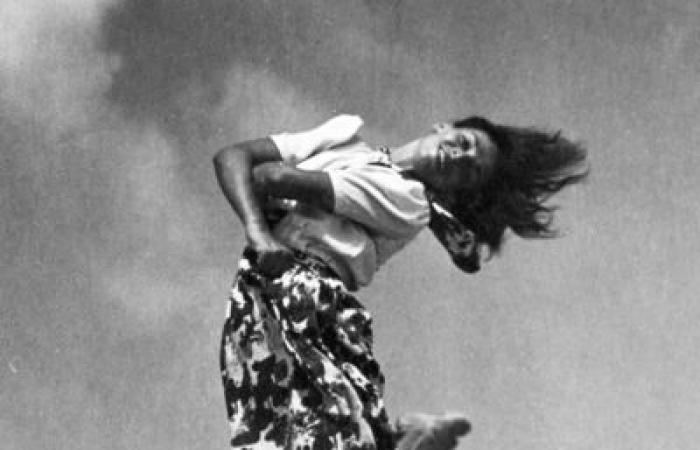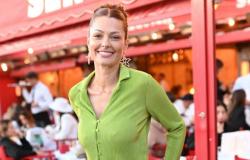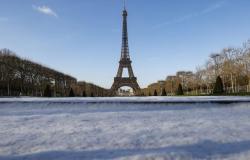
It's a very nice surprise, and a real shock: because today few know Paula Padani, a sublime dancer from the 30s and 50s, except the missionaries of a forgotten art who organized this exhibition like no other. Indeed, when we enter the sober basement that looks like an anti-atomic shelter of the MahJ, and we know that the artist highlighted was one of those personalities reviled by the ferocity and stupidity of the Nazis, we are expects dark images, like those of Mary Wigman, a beacon of German dance in the 1930s, and of whom Padani was a student. But no, it's a burst of laughter, a jubilant leap, ecstatic arching, a rush towards infinity, joy, love of the world, offered by admirable photos and other documents including his daughter, Gabrielle Gottlieb de Gall, who kept all these archives, is today making a donation to the MahJ.
© Alfons Himmelreich
From the shadows emerges a magnificent creature
Yet the story is dark, marked by the dramas of the 20th century: a Polish family fleeing the pogroms, settling in Hamburg, then Hitler's saber falling on the Jews, the deprivation of civil rights, and fortunately for the dancer aged 22, exile to healthier countries, such as Switzerland. Then it was the arrival at the sources of her people, in Mandatory Palestine, which became Israel in 48, where she performed tirelessly in theaters and kibbutzim despite the violence of the local war, finally the installation in Paris where she settled down with her husband, the Austrian visual artist Michael Gottlieb, and opened a school before passing away in 2001, at the age of 80.
It is the vigilant passion of Laure Guilbert, curator of the exhibition in the company of Nicolas Feuillie, her tireless desire to revive these movements, these strong artists who were able to flee in time, when they were not destroyed, and whose she tracks the slightest traces throughout the world, which was able to give their chance to this flowering of beauties: languages different from the classical codes, which aroused in Europe the souls in love with gestural freedom, with mute expression by an inner necessity. With exemplary rigor, with the meticulous patience of an archaeologist gathering together the countless crumbs of a scattered puzzle, Laure Guilbert, academic in charge of numerous research missions which she constantly pursues, is notably the author of a unique sum of its kind, Dancing with the Third Reich, modern dancers under Nazism. We also remember that she was for a time editorial manager of dance publications within the Paris Opera. And its action was enriched by the creation of the Association of Dance Researchers.
Splashing and salutary images of hope
Thanks to her, officiating in harmony with Paula Padani's daughter, Gabrielle Gottlieb de Gail, donor of this precious fund, here emerges from the shadows a magnificent creature, whose quiver of the whole being, the jubilant frenzy of the dance, the strength of soul, captured by the greatest photographers of her time, who followed her notably to Tel Aviv to keep track of her, burst into our eyes: they illuminate of superb resilience in more than dark years and carry a message of eternal renewal.
Certainly, Padani did not have to endure the camps, and slipped through the cracks, but the mark must have been strong, when returning to Germany, she danced there after the war in front of 140,000 refugees, installed in the camps of the zone of American occupation. After having found in the old country a Mediterranean culture which was not hers but touched her deeply. Whether her poses are orientalizing or expressionist (at the limit), whether she flies in front of the Eiffel Tower or on a shore, these are splashing and salutary images of hope. We then remember the last verse that Musset wrote for Victor Hugo, recalling “that the soul is immortal and that yesterday is tomorrow”. Certainly the movement is fleeting, but this exhibition captures its essence.
Jacqueline Thuilleux





